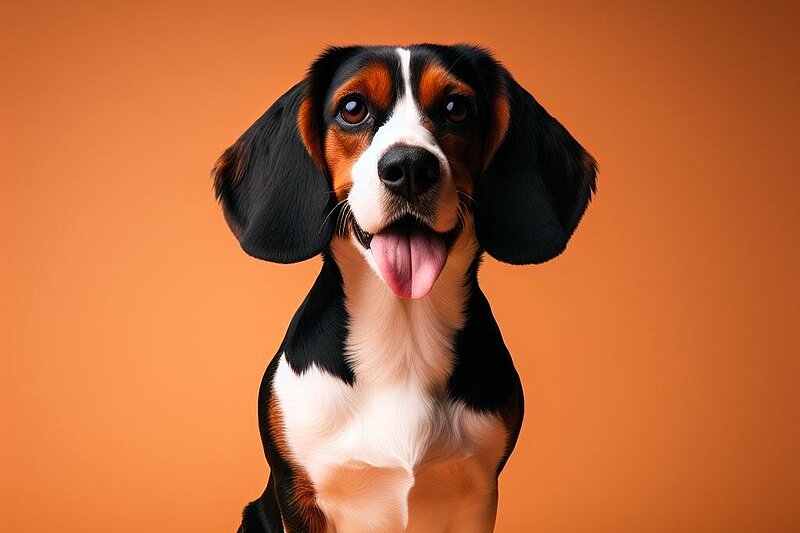French hound: A loyal companion for active people
History and origin
The French hound has a long and proud history dating back to the Middle Ages. It was originally bred in France to help hunt large game such as wild boar and deer. The breeding objectives focused on endurance, speed and a keen sense of smell. Over the centuries, various hunting dog breeds were crossed in order to combine the best characteristics. Today, the French hound is divided into three varieties: the Grand Anglo-Français Tricolore, the Grand Anglo-Français Blanc et Orange and the Grand Anglo-Français Blanc et Noir.
Who is the French Hound suitable for?
The French Hound is ideal for active people or families who spend a lot of time outdoors. It is an excellent companion for hunters, but also for sporty dog lovers who enjoy hiking, jogging or cycling. Due to its high urge to exercise, it is less suitable for life in a small city apartment, unless there are sufficient opportunities for daily, extended walks and activities.
Character and behavior
The French Hound is known for its friendly and even-tempered nature. It is very social and gets along well with other dogs and people. This breed is intelligent, eager to learn and has a natural curiosity, which makes it a pleasant family dog. When interacting with children, the French Hound is patient and affectionate, but due to its size and energy, supervision is advisable with small children.
Appearance of the French Hound
The French Hound is a large, elegant dog with an athletic build. It has a proud stance, long legs and a deep chest. The coat is short and dense, in the colors white and black or white and orange. The ears are long and drooping, the eyes are expressive and dark.
Grooming and health
Coat care
Grooming the French Hound is relatively uncomplicated. Its short coat should be brushed regularly to remove loose hair and keep the skin healthy. A weekly brushing is usually sufficient. The ears should also be checked regularly and kept clean to prevent infections.
Body care
Claw care is also important - they should be trimmed regularly, especially if the dog does not walk on natural surfaces that wear down the claws naturally. Dental care should not be neglected either; regular brushing helps to prevent tartar build-up and bad breath.
Health
The French Hound is considered a robust and healthy breed, but as with all breeds, certain genetic diseases can occur. These include hip dysplasia, ear infections and eye problems. Regular visits to the vet and a balanced diet help to maintain the dog's health.
Size and weight
An adult French Hound reaches a shoulder height of 60 to 70 cm and weighs between 30 and 35 kg. This makes it one of the larger dog breeds and requires corresponding space and exercise.
Exercise requirements and posture
The French hound needs a lot of exercise and loves to go for long walks, run and play. Daily exercise is a must. Due to its hunting instinct, it should not run off the lead in unsecured areas unless it has undergone reliable recall training.
Training recommendations
French hounds should be trained consistently but lovingly. He is intelligent and eager to learn, but reacts sensitively to harsh methods. Positive reinforcement and patience are the key to a well-behaved dog. Early socialization training is important to get him used to different people, animals and environments.
Behavior with children and other animals
The French Hound is generally good with children and other animals. He is friendly and outgoing, but his energy and size can sometimes be overwhelming. Early and positive socialization helps to promote harmonious coexistence.
Recognition by the FCI
Yes, the French Hound is recognized by the Fédération Cynologique Internationale (FCI). The FCI lists it in Group 6, Section 1.1 (Running Dogs).
